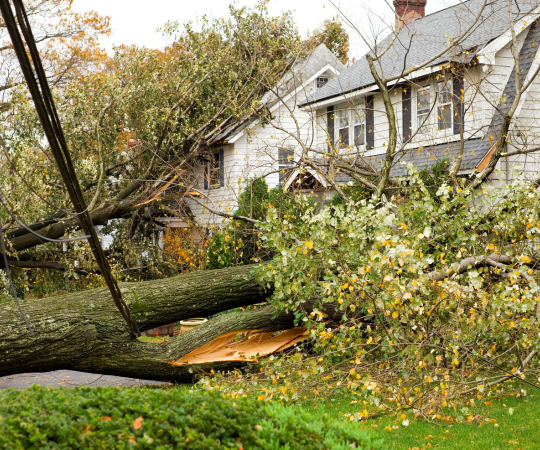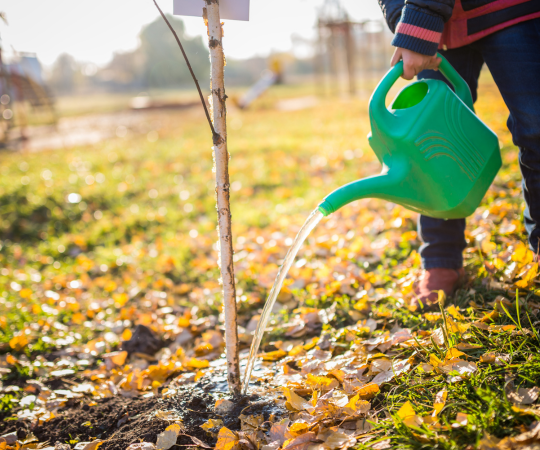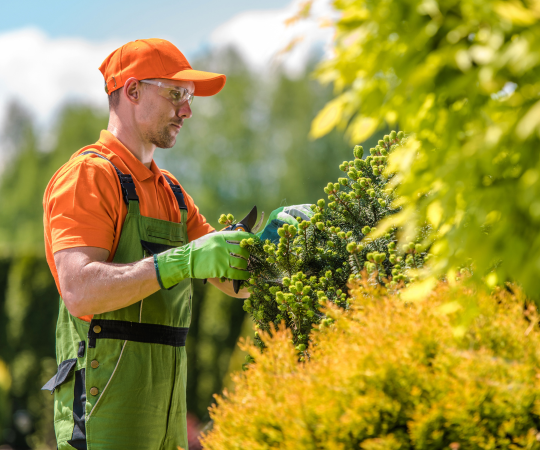Experienced Arborists Ready to Tackle Storm-Related Tree Emergencies
In the face of severe storms and unexpected tree emergencies, the importance of emergency tree care and storm damage restoration cannot be overstated. Trees provide us with numerous benefits, but when they become damaged or pose a threat due to storms, they require immediate attention. Reliable and prompt services during these critical times are crucial for ensuring the safety of individuals and protecting property. By addressing the aftermath of storms and providing expert tree care, professionals can restore order, mitigate risks, and preserve the beauty of our landscapes. In this blog post, we will explore the significance of emergency tree care and storm damage restoration services, highlighting their vital role in times of crisis.
Understanding the Need for Emergency Tree Care
Common causes of tree emergencies and storm damage
Tree emergencies can arise from various causes, including severe weather conditions such as storms, hurricanes, or strong winds. These natural events can lead to fallen branches, uprooted trees, or even complete tree failures. Other common causes of tree emergencies include disease or insect infestations, which can weaken the tree’s structure and make it susceptible to damage. Additionally, accidents like vehicle collisions or construction mishaps can result in immediate tree emergencies.
Potential risks and hazards posed by damaged trees
Damaged trees pose significant risks and hazards to both property and human safety. Hanging or fallen branches can damage structures, vehicles, or utility lines, leading to costly repairs or even injuries. In extreme cases, an unstable or uprooted tree may pose a threat to nearby buildings or individuals. Furthermore, diseased or decayed trees can have compromised structural integrity, making them prone to sudden collapse or limb failure.
Immediate actions to take in case of a tree emergency
When faced with a tree emergency, it is essential to prioritize safety and take immediate action. Clear the area around the damaged tree and ensure everyone keeps a safe distance. Contact professional tree care services promptly to assess the situation and provide expert guidance. Avoid attempting to handle the emergency yourself, as it can be dangerous without the proper knowledge and equipment. Professional arborists will have the expertise to evaluate the extent of the damage, determine the best course of action, and safely remove or stabilize the affected tree.
Understanding the need for emergency tree care emphasizes the importance of swift and professional intervention to mitigate risks, minimize property damage, and ensure the safety of individuals in these critical situations.

The Role of Professional Arborists in Emergency Tree Care
- Expertise and experience in handling tree emergencies:
Professional arborists possess specialized knowledge and training in dealing with tree emergencies. They have the expertise to assess the situation accurately, identify potential risks, and formulate effective strategies to address the emergency promptly. Their experience equips them with the ability to handle various tree-related scenarios, ensuring efficient and safe outcomes.
- Assessing tree stability and determining the best course of action:
One of the crucial roles of professional arborists in emergency tree care is evaluating the stability of damaged trees. They can assess the extent of the damage, determine whether the tree can be saved, or if it poses an immediate threat and requires removal. Their expertise allows them to make informed decisions regarding the best course of action, considering factors such as tree health, structural integrity, and potential risks.
- Utilizing proper tools and techniques for safe and efficient tree removal or restoration:
Professional arborists have access to specialized tools and equipment necessary for safe and efficient tree removal or restoration. They employ proper techniques and industry best practices to ensure the safety of both the workers and the surrounding environment. With their expertise and the right tools, they can perform tree removals, pruning, bracing, or other necessary procedures with precision and effectiveness.
In emergency situations, the role of professional arborists is invaluable. Their expertise, assessment skills, and use of appropriate tools and techniques enable them to address tree emergencies efficiently, minimize risks, and restore safety to the affected areas.
Swift and Effective Storm Damage Restoration
Assessing the extent of storm damage on trees and property
After a storm, professional arborists play a crucial role in assessing the extent of the damage inflicted on trees and the surrounding property. They conduct thorough inspections to identify broken branches, uprooted trees, or structural damage caused by the storm. This assessment helps determine the scope of restoration required and guides the subsequent steps in the restoration process.
Clearing debris and ensuring safety in the affected area
One of the immediate priorities in storm damage restoration is clearing debris and ensuring the safety of the affected area. Professional arborists work efficiently to remove fallen branches, uprooted trees, and other debris that may pose risks to people or property. By clearing the area, they create a safe working environment for further restoration efforts.
Restoring damaged trees through pruning, bracing, or other techniques
Professional arborists employ various techniques to restore damaged trees. This may involve pruning broken branches, providing structural support through bracing or cabling, or implementing other tree care practices to promote the tree’s recovery. Their expertise allows them to determine the most appropriate methods for each tree, considering factors such as the extent of damage, tree species, and overall health.
Swift and effective storm damage restoration is essential for minimizing further risks and restoring the beauty and functionality of the affected area. Professional arborists, with their assessment skills, debris clearing expertise, and restoration techniques, play a vital role in ensuring a timely and efficient recovery process.
Safety Measures in Emergency Tree Care
- Prioritizing safety during tree emergencies is paramount to protect both the workers and the surrounding environment.
- Professional arborists ensure they are equipped with proper protective gear and specialized equipment to carry out their tasks safely and efficiently.
- They adhere to industry standards and best practices for safe tree removal, employing techniques that minimize risks and prevent accidents. Safety measures are integral to ensuring a successful and secure emergency tree care operation.
Preventive Measures to Minimize Storm Damage
- Regular tree inspections and maintenance are vital to identify potential risks before they become emergencies.
- Pruning and trimming help reduce wind resistance and prevent limb failure during storms.
- Strengthening trees through proper fertilization and structural support enhances their resilience against storm damage. These preventive measures minimize the risks associated with severe weather events and promote the overall health and stability of trees.

Finding Reliable Emergency Tree Care Services
- When seeking emergency tree care services, it is essential to research and select reputable tree care companies with a proven track record of excellence.
- Checking credentials, certifications, and customer reviews helps ensure that the chosen service provider has the necessary expertise and qualifications.
- Evaluating their responsiveness, availability, and emergency service offerings ensures that they can promptly address tree emergencies and provide reliable assistance in times of crisis. Finding a reliable emergency tree care service provider is crucial for receiving efficient and professional assistance during tree emergencies.
Frequently Asked Questions
- What is emergency tree care? Emergency tree care involves providing immediate assistance and solutions for trees that have been damaged or pose a threat due to storms, accidents, or other unforeseen events. It includes assessing the situation, addressing risks, and performing necessary tree services such as pruning, bracing, or removal to ensure safety and minimize further damage.
- How quickly can emergency tree care services respond to an emergency? Response times can vary depending on the severity of the situation and the availability of the service provider. However, reliable emergency tree care services strive to respond promptly to urgent situations, often within hours of being contacted.
- Are emergency tree care services available 24/7? Many reputable tree care companies offer 24/7 emergency services to address tree emergencies at any time. These services understand the urgency of such situations and are committed to providing timely assistance when needed.
- How do I choose a reliable emergency tree care service? When selecting an emergency tree care service, consider factors such as their experience, certifications, and customer reviews. Look for a company that has a proven track record in handling tree emergencies and provides prompt, professional, and reliable services.
- Will my homeowner’s insurance cover the cost of emergency tree care? Homeowner’s insurance policies typically cover the cost of emergency tree care if the damage was caused by a covered event, such as a storm. It’s important to review your insurance policy and contact your insurance provider to understand the specifics of your coverage.
Reliable emergency tree care services are dedicated to promptly addressing tree emergencies and restoring safety and functionality to your property. By understanding the services offered, response times, and how to choose a reputable provider, you can be prepared to handle any tree emergency with confidence.
Related Source
from AAA Tree Lopping Ipswich https://ift.tt/5gzVhOT
via IFTTT

